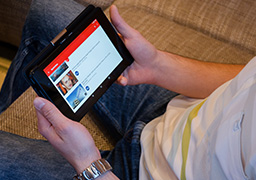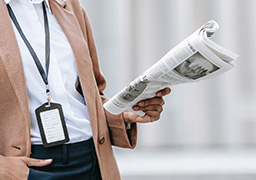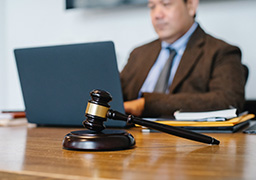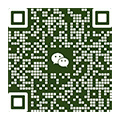The Ministry of Ecology and Environment releases the results of the national air quality forecast consultation for the second half of January 2025
On January 15, 2025, the China Environmental Monitoring Center, together with the Central Meteorological Observatory, the National Joint Center for Air Pollution Prevention and Control, the Northeast, South China, Southwest, Northwest, Yangtze River Delta Regional Air Quality Prediction and Forecasting Centers, and the Beijing Ecological Environment Monitoring Center, held a national air quality forecasting conference for the second half of January (January 16-31).
In the second half of January, the northern part of the Beijing Tianjin Hebei region and its surrounding areas will be mainly characterized by excellent pollution, with some areas experiencing mild pollution. The Yangtze River Delta region, Fenwei Plain, South China region, and Northwest region will be mainly characterized by good to mild pollution, with some areas experiencing moderate pollution. Most of the central and southern, northeastern, and southwestern regions of the Beijing Tianjin Hebei region and its surrounding areas will be mainly characterized by light to moderate pollution, with some areas experiencing severe pollution.
Beijing Tianjin Hebei and surrounding areas: In the second half of January, the air quality in the northern part of the region is mainly excellent, while there may be a stage of moderate pollution in the central and southern parts, and some cities may experience severe pollution. On the 16th, due to the influence of cold high pressure, the diffusion conditions were good, and the regional air quality was mainly excellent; On the 17th and 18th, the diffusion conditions will deteriorate, and the overall relative humidity will not be high. The central and southern parts of the region will have good to mild pollution, and there may be moderate pollution in southern Hebei and northeastern Henan on the 18th; On the 19th and 20th, there will be weak northwest winds, and the diffusion conditions in some areas around Beijing and central Hebei will improve. The central and southern parts of the region will be less affected by cold air, and the humidity will increase compared to the previous period. The air quality will mainly be light to moderate pollution, and some cities may experience severe pollution; On the 21st and 22nd, the northwest high pressure moved southward, and the diffusion conditions improved from north to south. The central and northern parts were excellent, while the southern part may experience moderate pollution due to transmission; On the 23rd and 24th, the meteorological field will weaken, and ground winds will turn south. Light to moderate pollution may occur in central and southern Hebei, western Shandong, and northern Henan; On the 25th and 26th, cold air will affect most of the region from north to south, and regional pollution may occur; From the 27th to the 29th, it will once again become calm and stable, coupled with the possible impact of fireworks and firecrackers during the Spring Festival, pollutants will rapidly accumulate; On the 30th and 31st, strong cold air affected most of the area, and the diffusion conditions improved.
Beijing: In the second half of January, the overall diffusion conditions in Beijing are generally average, with excellent air quality as the main factor. During the later period of cold air activity, which coincides with the Lunar New Year, low pressure warms up, humidity increases, and diffusion conditions are unfavorable. If combined with the impact of regional fireworks and firecrackers, it may lead to a significant increase in pollution levels. Among them, on the 16th and 17th, the rear of the ground high pressure turned into a low-pressure field, and the temperature continued to rise. The diffusion conditions were average, and the air quality was good; On the 18th, the ground turned south with temperature inversion, and the air quality was slightly polluted; From the 19th to the 21st, weak cold air was replenished, and the ground maintained a weak high-pressure northerly wind as the main force. The diffusion conditions were favorable, and the air quality was excellent; On the 22nd and 23rd, the ground will turn into a high-pressure rear area, with slightly poorer diffusion conditions and good air quality; On the 24th and 26th, due to the influence of cold air, the diffusion conditions improved again, and the air quality was excellent; From the 27th to the 30th, there will be low ground pressure, temperature rise, high humidity, and unfavorable conditions for pollution diffusion. If combined with the impact of regional fireworks and firecrackers during the Spring Festival, the pollution level may significantly increase; On the 31st, it may be affected by strong cold air, improving diffusion conditions and improving air quality.
Yangtze River Delta region: In the second half of January, the overall air quality in the region is mainly good to mild pollution, with moderate pollution in some areas of the central and northern regions, and severe pollution may occur in the short term. Among them, from the 16th to the 18th, under the control of high pressure, it turned into the rear of high pressure, with overall good to mild pollution in the region, moderate pollution in some areas of the central and northern regions, and severe pollution in some cities in the north on the 18th; From the 19th to the 21st, under the control of a weak pressure field, the overall pollution in the central and northern parts of the region was mainly mild to moderate, with locally severe pollution. The overall pollution in the southern part was good to mild, and locally moderate pollution occurred in the inland areas on the 20th; On the 22nd and 24th, the influence of cold air shifted to the rear of the high-pressure bottom, with the northeast airflow dominating. The overall pollution in the region was good to mild, and there was moderate pollution in some inland areas; On the 25th and 27th, the cold air affected the rear of the high-pressure bottom, causing overall good to mild pollution in the area and short-term moderate pollution; From the 28th to the 31st, due to the influence of cold air, the overall pollution in the region will be good to mild. If combined with the impact of the Spring Festival fireworks and firecrackers, some areas in the central and northern regions may experience moderate to severe pollution. The primary pollutants are PM2.5, PM10, or NO2.
Fenwei Plain: In the second half of January, due to the influence of cold air, the diffusion conditions are relatively favorable, and the air quality is mainly good to mild pollution; During the intermittent period of cold air, the diffusion conditions have significantly deteriorated, and the air quality is mainly light to moderate pollution. On the 29th, severe pollution may occur in some areas of central and southern China. On the 16th, under the control of the ground high-pressure system, the diffusion conditions were relatively good, and the air quality was mainly good. There may be mild pollution in the central and southern regions; On the 17th, the pressure field weakened, humidity increased, diffusion conditions deteriorated, and air quality was mainly good to mild pollution; On the 18th and 19th, influenced by the northwest airflow, the diffusion conditions improved, and the air quality was mainly good. There may be mild pollution in some areas of central and southern China; From the 20th to the 22nd, the northward airflow on the ground will be affected by the eastward cold air, and the diffusion conditions will improve. The air quality will be mainly good. There may be pollution transmission effects in some parts of the western region on the 21st, mild pollution may occur in some areas of central and southern China, and short-term moderate pollution may exist in some areas of Guanzhong, Shaanxi; On the 23rd, the pressure field weakened and the diffusion conditions were poor. The air quality in the northwest of Shanxi was mainly good, while in the central and eastern parts, it was mainly good to mild pollution. In the southern part of Shanxi and the Guanzhong area of Shaanxi, it was mainly light to moderate pollution; On the 24th and 25th, due to the influence of cold air from the northwest, the diffusion conditions have improved, and the air quality is mainly good. There may be mild pollution in the central and southern parts of Shanxi; From the 26th to the 29th, the ground will be affected by southerly airflow, increasing humidity and gradually deteriorating diffusion conditions. Coupled with the possible impact of fireworks and firecrackers during the Spring Festival, pollutants will further rise. The air quality in the northern part of the region will mainly be good to mild pollution on the 26th, good to mild pollution in the central and southern parts on the 26th, and light to moderate pollution on the 27th to 29th. There may be severe or above pollution in some areas; On the 30th and 31st, due to a new round of cold air and subsequent impacts, the diffusion conditions are good, and the air quality is mainly good. There may be mild pollution in some areas in the south. The primary pollutant is PM2.5 or PM10.
Northeast region: In the second half of January, there will be fewer cold air processes in the region, which will continue to be affected by static stability and high humidity. The diffusion conditions will be unfavorable, and there may be large-scale mild pollution processes on the 17th to 20th, 22nd to 24th, and 26th to 27th, and locally there may be moderate to severe pollution. Among them, from the 17th to the 18th, the humidity increased and the diffusion conditions were unfavorable. The eastern and southern parts of Inner Mongolia, central and western Liaoning, central and western Jilin, southern and eastern Heilongjiang were mainly polluted with good to mild pollution, while local areas in Heilongjiang and central and western Liaoning were moderately polluted on the 18th; On the 19th and 20th, due to the influence of weak high pressure, the diffusion conditions are poor. The eastern and southern parts of Inner Mongolia, the central and western parts of Jilin, the southern and eastern parts of Heilongjiang, and most parts of Liaoning will have mild to moderate pollution. Local areas in Heilongjiang and central and western parts of Jilin may experience moderate to severe pollution on the 19th and 20th respectively; On the 21st, the pollution in the southwest of the region was slightly cleared due to the influence of northerly winds, while the pollution in the central and western parts of Jilin, the central and eastern parts of Liaoning, the southern and eastern parts of Heilongjiang was good to mild, and other areas were excellent; From the 22nd to the 24th, due to the influence of a weak high-pressure system, the wind speed was relatively low, and pollution gradually accumulated and worsened. The eastern and southern parts of Inner Mongolia, most of Liaoning, the central and western parts of Jilin, the southern and eastern parts of Heilongjiang, and other areas were well polluted. Among them, from the 23rd to the 24th, there was moderate pollution in some areas of central Liaoning and Heilongjiang; On the 25th, due to the influence of a cold air process, there was a northerly wind in the southwest of the region, and the diffusion conditions slightly improved. Most of the region was dominated by excellent conditions, while the southern and eastern parts of Heilongjiang were well to mildly polluted; On the 26th and 27th, due to the influence of the pressure field, the diffusion conditions worsened, and the eastern and southern parts of Inner Mongolia, most of Liaoning, the central and western parts of Jilin, the southern and eastern parts of Heilongjiang, and the eastern regions were well to mildly polluted; On the 28th, there will be strong northerly winds in the region. If combined with the impact of fireworks and firecrackers, the southern and eastern areas will be moderately to severely polluted, while other areas will be mainly affected; On the 29th, the region was under high pressure, compounded by the impact of fireworks and firecrackers, causing severe to severe pollution in most parts of Liaoning and central and western Jilin, moderate to severe pollution in eastern southern Inner Mongolia, southern and eastern Heilongjiang, and good to mild pollution in other areas. The primary pollutant is PM2.5 or PM10.
South China region: In the second half of January, due to the influence of weak cold air, high pressure, and uniform pressure fields, the atmospheric diffusion conditions in most parts of South China region are generally average to poor. Considering the impact of the Spring Festival fireworks and firecrackers, the air quality is mainly good to mild pollution. Among them, from the 17th to the 19th, there was moderate to severe pollution in central Guangxi; From the 20th to the 21st, there was light to moderate pollution in most parts of Hubei, central Hunan, and western Guangxi; On the 22nd and 23rd, there was mild to moderate pollution in the central and northern parts of Hunan province; On the 26th and 27th, there was mild to moderate pollution in the central and eastern parts of Hubei province; On the 28th and 29th, most parts of Hunan and Hubei experienced moderate to severe pollution, while most parts of Guangdong and central Guangxi experienced mild to moderate pollution; On the 30th and 31st, most parts of Hunan and Hubei experienced moderate to severe pollution. The primary pollutants are PM2.5 or O3.
Southwest region: In the second half of January, the overall pollution in the region is mainly light to moderate. On the 28th and 29th, due to the impact of fireworks and firecrackers, the air quality may increase by 1-2 levels compared to the forecast, and severe pollution may occur in some areas of Sichuan. Among them, from the 16th to the 18th, most of Sichuan, Chengdu, and Guizhou experienced cloudy weather, with pollutant concentrations gradually accumulating. Chongqing, Chengdu Plain, southern and northeastern Sichuan, and some cities in Guizhou had good to mild pollution; From the 19th to the 21st, most of the region will turn sunny, with Sichuan Chongqing and Guizhou mainly in a calm and stable state. The temperature inversion will increase in the morning and evening. Some cities in the Chengdu Plain, southern and northeastern Sichuan will have light to moderate pollution, while some cities in Chongqing, Chengdu Plain, southern and northeastern Sichuan, and Guizhou will have good to mild pollution. The rest of the cities will have excellent pollution; On the 22nd and 23rd, the humidity in the basin increased, coupled with the influence of frontal compression, and the accumulation rate of pollution accelerated. Some cities in the Chengdu Plain, southern and northeastern Sichuan were lightly to moderately polluted, while Chongqing, Chengdu Plain, southern and northeastern Sichuan, and eastern, western and southern Guizhou were well to mildly polluted; From the 24th to the 26th, due to the influence of cold air, there will be increased wind and precipitation, and the air quality will gradually improve. Most of the region will be dominated by excellent air quality; From the 27th to the 29th, it will enter a stable state. Due to the impact of fireworks and firecrackers, the air quality may increase by 1-2 levels compared to the forecast, and some cities in Sichuan may experience severe pollution; From the 30th to the 31st, weak cold air combined with precipitation is expected to gradually improve air quality. The primary pollutant is PM2.5.
Northwest region: In the second half of January, affected by weak cold air in the early stage, the diffusion conditions are slightly better, and the air quality is mainly good. There may be mild pollution in some areas; Due to the influence of weak ridges in the later stage, the diffusion conditions have worsened, with good to mild pollution being the main type. Moderate or above pollution may occur in the central and eastern regions, and moderate to severe pollution is the main type on the northern slope of the Tianshan Mountains in Xinjiang. On the 16th, most of the region was controlled by the ridge area, with poor diffusion conditions and mainly good air quality. There may be mild pollution in Guanzhong, Shaanxi, central and southwestern Gansu, and moderate pollution in some areas of southern Shaanxi; On the 17th, the central and northern parts of the region were affected by cold air, with high ground wind speeds and the possibility of short-term floating dust weather in some areas. The pressure field in the eastern part was weak, and the diffusion conditions were poor. The air quality in most parts of the region was mainly good, and there may be mild pollution in Guanzhong, Shaanxi, central and western parts of Ningxia, and northern parts. There may also be moderate pollution in some areas of southern Shaanxi; On the 18th and 19th, due to the influence of cold air, the diffusion conditions are good, and the air quality is mainly good. There may be mild pollution in the central and southern parts of Shaanxi; On the 20th and 21st, due to the influence of high-altitude ridges, the diffusion conditions are average, and the air quality is mainly good. Mild pollution may occur in most parts of Gansu, northern Ningxia, and Guanzhong area of Shaanxi, and moderate pollution may occur in some areas of southern Shaanxi; On the 22nd and 23rd, the central and northern parts of the region will be affected by shortwave troughs, and the diffusion conditions will improve. The central and western parts of Gansu will be affected by strong winds on the ground, and there may be short-term sandstorms on the 23rd. The pressure field in the eastern part will be weak, and the diffusion conditions will continue to be poor. The air quality will be mainly good. There may be mild pollution in some areas of central and southwestern Gansu, northern and southern Ningxia, and southern Shaanxi, and moderate pollution in the Guanzhong area of Shaanxi; On the 24th and 25th, due to the influence of cold air, the diffusion conditions gradually improved from west to east, and the air quality was mainly good. Mild pollution may occur in most parts of Gansu and central and southern Shaanxi; From the 26th to the 29th, due to the control of high-altitude ridges, the overall diffusion conditions are poor, and the air quality is mainly good to mild pollution. Moderate pollution may occur in central and southwestern Gansu, and light to moderate pollution may occur in central and southern Shaanxi. Combined with the possible impact of fireworks and firecrackers during the Spring Festival, the air quality may increase by 1-2 levels compared to the forecast; On the 30th and 31st, affected by strong cold air, the diffusion conditions are good, and the regional air quality is mainly good. There may be a short-term sandstorm process from west to east in the central and eastern parts, mild pollution in most parts of Gansu, northern Ningxia, and Guanzhong area of Shaanxi, and moderate pollution in some areas of southern Shaanxi. Xinjiang region: From the 16th to the 31st, the air quality in cities in northern Xinjiang was excellent; The cities on the northern slope of the Tianshan Mountains are mainly affected by moderate to severe pollution, with light to moderate pollution on the 22nd, 23rd, and 27th due to weak cold air; On the 28th and 29th, due to the strong influence of cold air, the pollution will mainly be good to mild; On the 30th, the main pollution will be mild to moderate; The cities in eastern and southern Xinjiang are mainly characterized by mild to moderate pollution, while Turpan and Kashgar may experience moderate pollution during certain periods. The primary pollutant is PM10 or PM2.5.




















